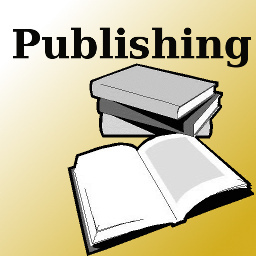 I promised to be open about sales of Volume One of the Crimson Pact, and this is a continuation of that. (And coincidentally, following up on Tobias Buckell’s posting about his own digital experience.) (Edit: Jim C. Hines did a similar posting about the same time that this went live. I mentioned when we broke $10 per average short story author here; I’ve updated this to be through 10 April. Graph at the bottom, which excludes physical CD sales.
I promised to be open about sales of Volume One of the Crimson Pact, and this is a continuation of that. (And coincidentally, following up on Tobias Buckell’s posting about his own digital experience.) (Edit: Jim C. Hines did a similar posting about the same time that this went live. I mentioned when we broke $10 per average short story author here; I’ve updated this to be through 10 April. Graph at the bottom, which excludes physical CD sales.
We’ve moved 83 copies so far. Doesn’t sound like much? Try selling books at a con sometime – and considering that I’ve been told many small presses have print runs of 500 books, that’s not bad for a book that’s been out for less than a month. And it bodes well for the authors, too.
There was an initial boost of sales as everyone blogged and tweeted and facebooked and so on, not to mention convention appearances.
Sales at the website rose and peaked first, and have tapered off in the last week or so, as did sales at Barnes & Noble (though with a smaller arc to the curve).
I can tell when someone (including myself) blogs about the Pact, because I frequently see a blip of sales around that day on the site.
Sales at Amazon peaked a little later, but unlike the other two sources, have leveled off at approximately one per day. Consistently. Without intervention. That’s roughly similar to Tobias’ experiences as well.
(One copy has sold at Smashwords. Due to various issues, the book is still “pending” at the iBookstore and Kobo as I write this.)
This leaves me with two hypotheses:
1. Sales at Amazon are going to stay steady. I think they’re going to slowly build without further massive intervention. I disagree with Tobias on this point for two reasons. First, there’s built-in “boosters” – the next volumes in the series. There’s plenty of evidence that sales of a new volume in a series boosts sales of the backlist, and I suspect that will be the case here as well. Second, I said “massive intervention” for a reason. We’re all still talking about the book (myself in particular), but in a natural way.
2. Every time anyone involved with the project goes to a con we’ll see more people be interested in the work and the sales go up again… and probably plateau a little higher each time as well.
Kris Rusch (among others) has written a lot about traditional publishing’s “produce model”, and how indie efforts (or, I guess, small press now) like ours are not bound by those expectations.
That’s EXCELLENT.
“Wait, Steve,” says the hypothetical strawman, “why are you so thrilled about this?”
The thing that delights me about this project is that everyone involved can get back to writing.
Most of us are attending at least one con this year (in my case, many, many more). We’ll talk naturally to people about The Crimson Pact. There are two more volumes (at least) in the works. There is a reasonable expectation that this will likewise boost sales of the first volume.
Since I blogged about reaching the “$10 per average author” milestone, each author’s take (remember, they get 75% of the price after PayPal and the eRetailer takes their fees) has grown by 25% in just over a week. (In raw numbers, that’s a couple bucks a week at this point.)
Even if I’m completely wrong 1 about the increase in sales, at this rate the average short story author will earn about $130 in a year for their tale.
And it’ll still be in (digital) print. And it’ll still be earning them money next year. And the year after.
This is the promise of digital publishing – it’s moving away from the produce model of publishing to an investment model of publishing.
1I don’t think I am, Tobias’ example notwithstanding. There’s too many examples from Kris Rusch, Dean Smith, Mike Stackpole, and others demonstrating otherwise.


